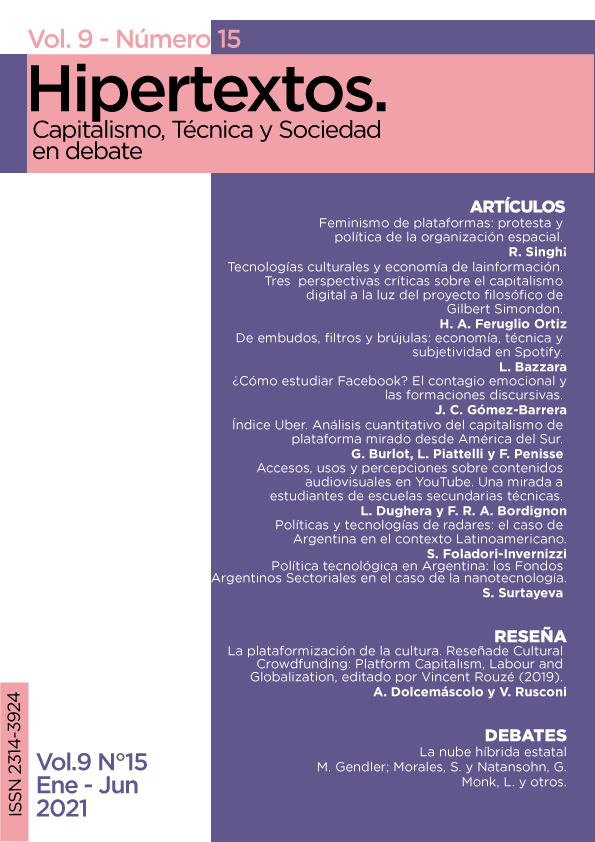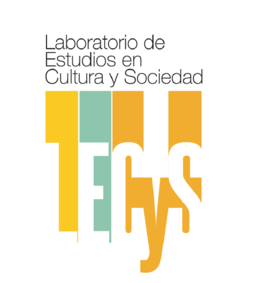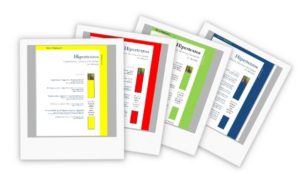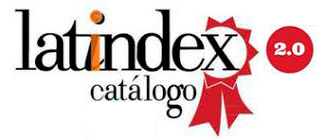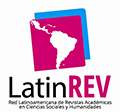Accesses, uses and perceptions of audiovisual content on YouTube
A look into technical high school students
DOI:
https://doi.org/10.24215/23143924e031Keywords:
learning, YouTube, students, technical high schoolsAbstract
The platforms have had in the last decade, at least, a continuous and accelerated growth. Within this context, young people make these uses are significant. YouTube is no stranger to this phenomenon, even more so it has gained relevance not only in quantitative terms, but also in qualitative terms. That is, both in the number of subscribers and views, and in the variety of content offered. Thus, in a broader horizon that allows us to understand the learning processes that young people deploy in those spaces, we propose, on the one hand, to characterize the uses of YouTube made by school students techniques of popular sectors and, on the other hand, describe the perceptions that these actors have regarding this platform as a space for solving problems linked to both informal and formal education. Methodologically, we present the results of an online survey carried out among students of the basic cycle of technical public secondary schools of the La Matanza district in 2019.
Downloads
References
AGETIC y UNFPA (2019). Juventudes TIC. Estudio sobre las TIC en adolescentes y jóvenes en Bolivia. AGETIC & UNFPA.
Almandoz, M. (2010). Políticas para la educación técnico-profesional en la Argentina. En M. Almandoz [et.al.] Educación y trabajo: articulaciones y políticas. IIPE-UNESCO.
Bardakcı, S. (2019). Exploración del uso educativo de YouTube por parte de estudiantes de bachillerato. Revista Mexicana De Bachillerato A Distancia, 11(22). http://dx.doi.org/10.22201/cuaed.20074751e.2019.22.70605
Berk, R. (2009). Multimedia teaching with video clips: TV, movies, YouTube, and mtvU in the college classroom. International Journal of Technology in Teaching and Learning, 5(1), 1-21.
Bordignon, F. (2020). Estudio de la relación que los estudiantes de primer ciclo de la escuela secundaria técnica tienen con las tecnologías digitales. Virtualidad, Educación y Ciencia, 11(21), 52-69
Burgess, J. y Green, J. (2018). Youtube: Online video and participatory culture. Polity Press.
Castells, M. (2001). Epílogo: Informacionalismo y la Sociedad Red. En P. Himanen La ética hacker y el espíritu de la era de la información. Destino.
Coombs, P. y Ahmed, M. (1975) La lucha contra la pobreza rural. El aporte de la educación no formal. Madrid, Tecnos.
De Koning, B., Hoogerheide, V. y Boucheix, J. (2018). Developments and trends in learning with instructional video. Computers. Human Behavior, 89, 395–398. https://doi.org/10.1016/j.chb.2018.08.055
DeWitt, D., Alias, N., Siraj, S., Yaakub, M.Y., Ayob, J. & Ishak, R. (2013). The potential of YouTube for teaching and learning in the performing arts. Procedia. Social and Behavioral Sciences, 103, 118-1126. https://doi.org/10.1016/j.sbspro.2013.10.439
DGCYE (2009, febrero 9). El Primer ciclo de la Educación Secundaria Técnica. Resolución Nº 88/09, Anexo 3. Dirección General de Cultura y Educación de la Provincia de Buenos Aires, Argentina. https://n9.cl/ai5x5
Dolcemáscolo, A. (2016). Representaciones en torno a la explotación cognitiva informacional: el caso YouTube. (Tesis de maestría). Universidad Nacional de Quilmes, Quilmes.
Dolcemáscolo, A. (2017). “Explotación cognitiva” en Internet. Tensiones entre la producción de contenidos audiovisuales sin fines de lucro y su utilización con fines comerciales: el caso de YouTube. En J. Gibert, A. Gómez, y R. Cancino (Eds.), Ciencia, tecnología y sociedad en América Latina. Los enfoques de las nuevas generaciones. RIL Editores.
Dolcemáscolo, A. y Dughera, L. (2019). Emprendedores 2.0: de la creatividad a la precariedad en Youtube. Revista Intercambios, año IV, n. 2. , 139-148.
Domínguez, C. y Murillo Estepa, P. (2018). La práctica docente mediada con tecnologías. YouTube como herramienta de aprendizaje en educación superior. Foro Educacional, n. 31, 2018, 11-29.
Duffy, P. (2008). Engaging the YouTube Google-eyed generation: Strategies for using Web 2.0 in teaching and learning. Electronic Journal of E-learning, 6(2), 119-130.
Edache-Abah; Odachi F.y Mumuni, A. (2019). Effect of YouTube on Performance of Secondary School Students. Biology Concepts in Ikwerre Local Government Area of Rivers State. International Journal of Engineering Science Invention (IJESI), 8(8), series. III, 54-61,
Fleck, B., Beckman, L., Sterns, J. y Hussey, H. (2014). YouTube in the Classroom: Helpful Tips and Student Perceptions. The Journal of Effective Teaching, 14(3), 21-37.
Fundación Telefónica (2017). Sociedad digital en España. Ariel.
Gallego, C. y Murillo, P. (2018). La práctica docente mediada con tecnologías. YouTube como herramienta de aprendizaje en la educación superior. Foro Educacional, (31), 11–29.
Google (2017, agosto). El vínculo de los argentinos con YouTube. Think with Google. https://www.thinkwithgoogle.com/_qs/documents/4435/Infografia_YTPulse_AR.pdf
González Gómez, O. (2018). Apropiación y hábitos de consumo de jóvenes en Colombia frente al contenido de los youtubers. Dixit, (28), 12-21. https://doi.org/10.22235/d.v0i28.1578
Hernández, M. y Andrade del Cid, P. (2020). Consumo cultural de adolescentes entre 15 y 18 años en YouTube: el caso de Xalapa, México. Revista Transdigital, 1(1).
Hurtado Sanjurjo, M. (2017). Usos y motivaciones de uso de Youtube de los adolescentes de 3º y 4º de ESO del Colegio PP. Franciscanos de Lugo. Perspectiva de la creación de contenidos y de la utilización de esta red social como recurso educativo. (Tesis de maestría). Universidad Nacional de Educación Distancia, Madrid.
Jodelet, D. (1984). La representación social: fenómeno, concepto y teoría. En Serge Moscovici (comp.). Psicología social II. Paidos.
Koya, K.; Bhatia, K.; Hsu, J. y Bhatia, A. (2012). Youtube and the expanding role of videos in dermatologic surgery education. Seminars in cutaneous medicine and surgery, 31, 163-167.
Ley 26085/2005, de 7 de setiembre, de Educación Técnico Profesional. http://www.inet.edu.ar/wp-content/uploads/2012/10/ley-26058.pdf
Martín-Barbero, J. (2003). Saberes hoy: diseminaciones, competencias y transversalidades, OEI - Revista Iberoamericana de Educación, n. 32.
Masanet, M.; Mar Guerrero-Pico, M. y Establés, M. (2019). From digital native to digital apprentice. A case study of the transmedia skills and informal learning strategies of adolescents en Spain. Learning, Media and Technology, v. 44, i. 4, 400-413. https://doi.org/10.1080/17439884.2019.1641513
Moghavvemi, s.; Sulaiman, A.; Ismawati Jaafar; N. y Kasem, N. (2018). Social media as a complementary learning tool for teaching and learning: The case of Youtube. The International Journal of Management Education, 16, 37–42. https://doi.org/10.1016/j.ijme.2017.12.001
Murolo, L. (2014). Hegemonía de los sentidos y usos de las tecnologías de la comunicación por parte de jóvenes del Conurbano Bonaerense Sur. (Tesis doctoral). Universidad Nacional de La Plata, La Plata
Nagumo, E.; Teles, L. y Almeida Silva, L. (2020). A utilização de vídeos do Youtube como suporte ao processo de aprendizagem. Using Youtube videos to support the learning process. Revista Eletrônica de Educação, v. 14, 1-12. https://doi.org/10.14244/198271993757
Palazón-Herrera, J. (2014, julio 3). Formatos audiovisuales online para la enseñanza instrumental en el aula de música. CIMIE14, 3er Congreso Multidisciplinar de Investigación Educativa. Segovia, España.
Pearson Education (2018,). Beyond Millennials: The Next Generation of Learners. Pearson Education. https://cutt.ly/ii8eITm
Pires, F., Masanet, M. y Scolari, C. (2019). What are teens doing with YouTube? Practices, uses and metaphors of the most popular audio-visual platform, Information, Communication & Society, 1–17. https://doi.org/10.1080/1369118X.2019.1672766
Pujol Torras, F. (2018). Redes sociales y aprendizaje. Revista de Estudios de Juventud, n. 119., 27-46
Roque Rodríguez, E. (2020). Tutoriales de Youtube como estrategia de aprendizaje no formal en estudiantes universitarios. RIDE, Revista Iberoamericana para la Investigación y el Desarrollo Educativo, 11(21). https://doi.org/10.23913/ride.v11i21.797
Secretaría de Evaluación Educativa (2017, octubre). Las escuelas técnicas secundarias en la Argentina Características institucionales y rendimiento educativo. Informe Final. Ministerio de Educación. http://www.bnm.me.gov.ar/giga1/documentos/EL006360.pdf
Scolari, C. (2018). Transmedia literacy in the new media ecology: white paper. Barcelona: Universitat Pompeu Fabra. Departament de Comunicació.
Scolari, C. (2018b). Lo aprendí en un tutorial, en Anfibia. https://cutt.ly/Ki8l8PB
Shimray, S. y Ramaiah, C. (2020). Use of YouTube by Students: A Case Study of Pondicherry University. SRELS Journal of Information Management, 56(3), 113-121.
Think with Google (2019, junio). YouTube: mucho más que una plataforma de entretenimiento. Think with Google. http://cort.as/-RWAI
Srnicek, N. (2018). Capitalismo de plataformas. Caja negra.
UNESCO/NFIL (2003). Declaración de Praga. United Nations Educational, Scientific and Cultural Organization and National Forum on Information Literacy. http://www.peri.net.ni/pdf/01/Declaraci1.pdf
Usaini, S.; Okorie, N.; Chinenye, E. y Oyedepo, T. (2019). Internet, Youtube and Informal Learning among Undergraduate Students. International Journal of Education and Information Technologies, v.13.
Van Dijck, J. (2016). La cultura de la conectividad: una historia crítica de las redes sociales. Siglo XXI.

